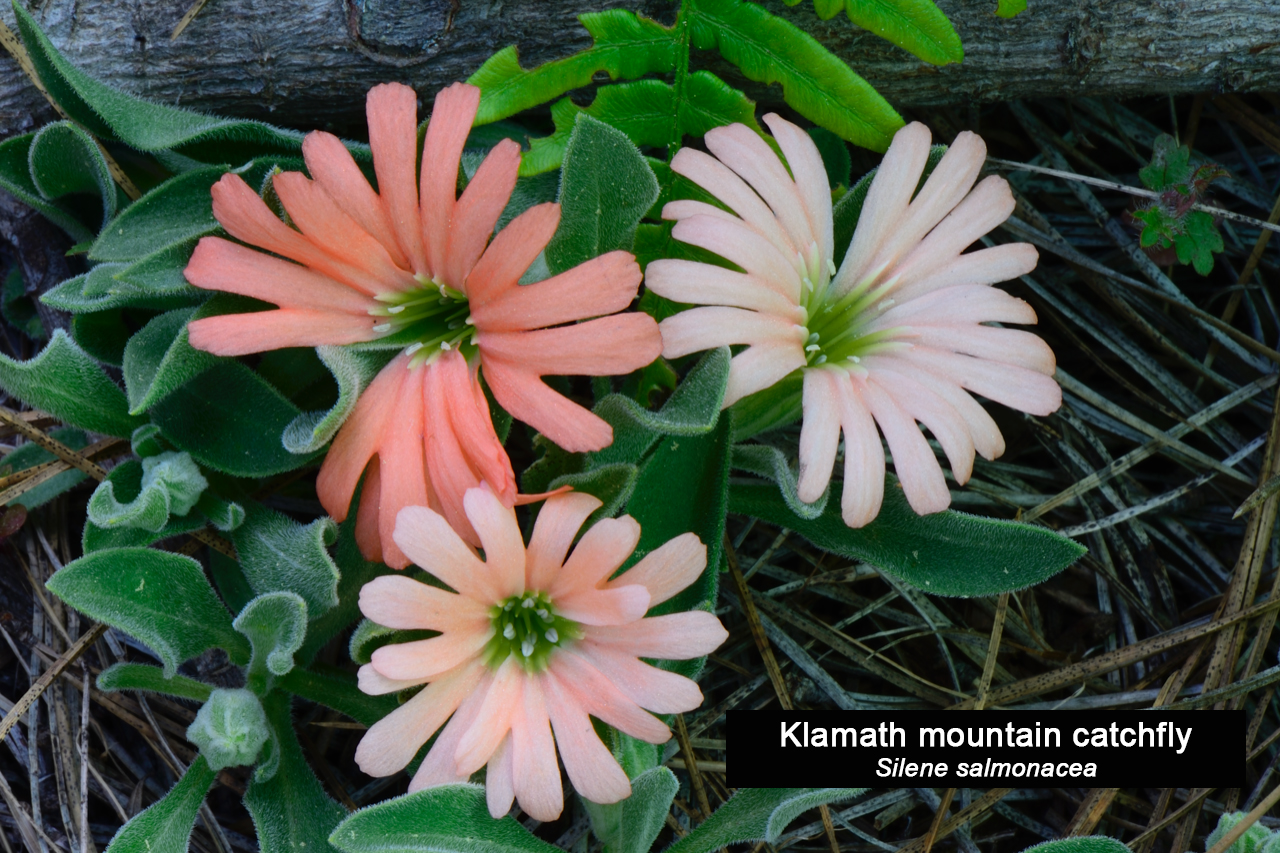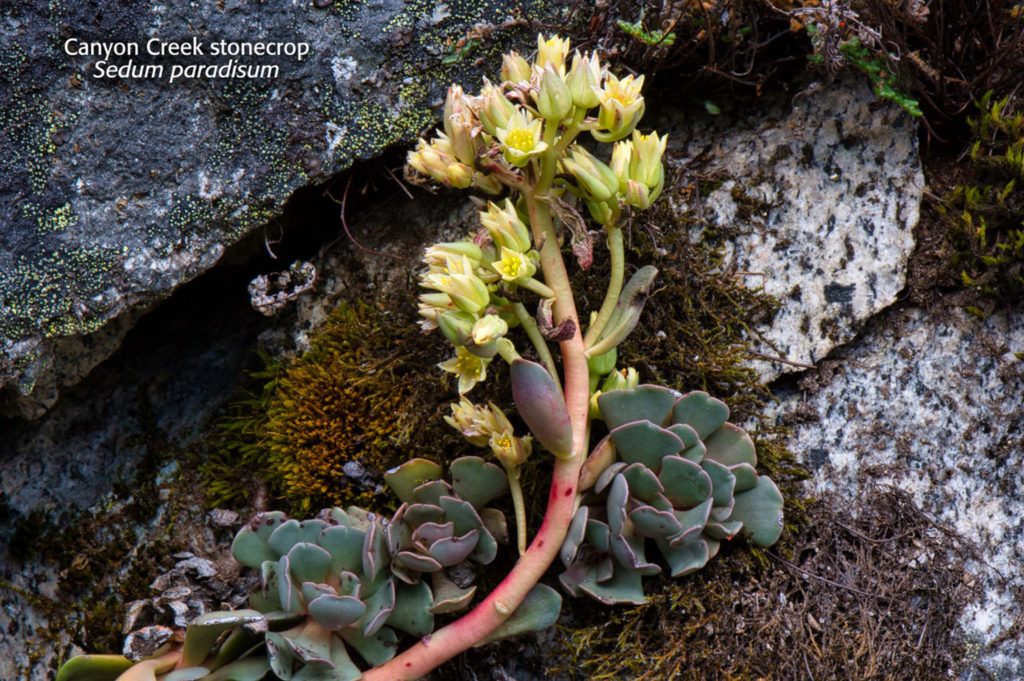
Photographer Ken DeCamp will be speaking on Thursday, October 21, at 7 pm, in room 1425 on the Shasta College campus. The new edition of his Wildflowers of the Trinity Alps (with co-authors Julie Kierstead and Julie Knorr) will be for sale. (College requirements for masking and distancing will be observed.)
Here’s a little bit about Ken, in his own words:
I have lived in and explored this amazing landscape since the 1950s. Backpacking with my family into the Trinity Alps, Russian and Marble Mountain Wilderness Areas was more than just a past-time—it was a way of life. Every spare moment was spent hiking the trails, climbing the peaks, and camping next to the pristine mountain lakes and streams. My folks were avid outdoor photographers, their images published in Sunset and Motorland magazines in the late 50s and 60s. It was a given that I would see the world through the camera lens from an early age. And, with my parents’ deep-seated love of the natural world, it was a natural outcome for me to develop an interest in wildflowers, fungi, trees, cryptograms, and critters.
In the late 60s, I signed on with the USDA Forest Service working on the Weaverville Ranger District, which led to a 39-year career with the agency: several years in fire, Land Management Planning and Public Affairs. This kind of work kept me out in the field for the most part and in close contact with these rugged mountains.
In the 60s, 70s, and 80s, I devoted a lot of my creative energy to drawing native plants and eventually taught native plant identification and freehand drawing classes at Shasta College. I went to work in earnest with my cameras in the 90s, recording my adventures in the mountains but paying special attention to the flowering plants. By the time 2015 rolled around, I realized that I had accrued something like 13 terabytes of photographs, two thirds of which were wildflowers. It became apparent that something needed to be done to get those images published in a wildflower guide.
In 2016, I put together a small, self-produced example of a guide I thought would work well, especially for amateur botanists, and presented to my two most favorite professional botanists—Julie Kierstead and Julie Knorr—for their opinion. Intrigued with the idea, the two joined me in pushing ahead with a plan for producing a new and comprehensive scientifically accurate guide to the wildflowers of the Trinity Alps.
I presented the idea to the California Native Plant Society and they were supportive of the idea but backlogged with dozens of other print projects. That’s when Michael Kauffman of Backcountry Press stepped in and “volunteered” his publishing company to produce the book. The rest, for the most part, is history. Wildflowers of the Trinity Alps became a reality and hit the bookshelves in 2017. It was very well reviewed and sold out within three years, which led to the latest edition, Wildflowers of California’s Klamath Mountains, with an additional 109 species.
The title change was needed to address the fact that this collection of photographs spans a much larger area than the Trinity Alps. Wildflowers do not respond to artificial boundaries and most of those illustrated in this guide can be found throughout the Klamath Mountain Knot and, indeed, beyond. It is already selling well and a third, even larger edition might just be lurking down the road in another three or four years. ~Ken DeCamp

